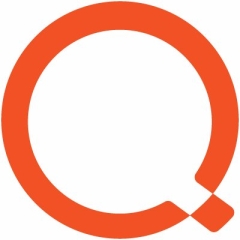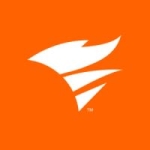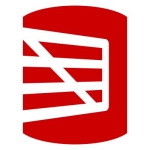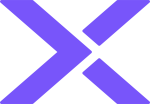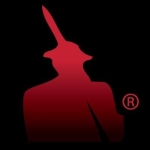What is our primary use case?
We are using Foglight to monitor both SQL Server and Oracle Databases across the enterprise and across multiple directory domains.
Our Foglight installation is on-premises and on virtual servers.
How has it helped my organization?
In general, it helps us become more proactive rather than reactive. DBAs can go in and look at the different alarms and tweak thresholds. Obviously, if we wanted to be proactive, we would want to catch some of these issues while they are still in the warning or critical stage before they become fatal alarms. So, the biggest benefit to the organization is the fact that we can proactively monitor databases and prevent downtime. For example, this could be resource contention, where we could look at memory, CPU, or storage. If it is starting to creep up and show yellow or orange on the dashboard that means the DBA needs to either troubleshoot what could be grabbing all those resources or plan to extend some resources, before they run out.
When we use the solution for monitoring databases, it enables us to drill down and see what is causing an issue, e.g., if something doesn’t look right, especially if the DBA is seeing a pattern. If it is something that recurs a couple of times, then we would definitely leverage Foglight as well to drill down and take a look at activities. We also have the Performance Investigator in the environment, which I find to be handy because you can drill down into actual connections and look up which users are connected, which workstations are connected, and which servers are connected, then try to drill down on the problematic session/query. Sometimes, if we are troubleshooting performance, then we will need to drill down into the end user or the actual client machine where the connection is coming from. We have the ability to go back and adjust the timeline to drill down to a specific time window. That is where the Performance Investigator does a great job. This has saved us lots of time with root cause analysis. It could save anywhere from hours to days. If you are trying to track things down without these types of tools, then it becomes really challenging.
The ability to monitor multiple database platforms streamlines our database operations. The single pane of glass is what we were really after when we picked Foglight. We knew we wanted something that could monitor cross-platform because it does save a lot of time to use the same tool. The one thing that I like with Foglight is that we don't have to install anything locally, like agents, directly on the database servers. That was also a big seller because it simplifies things.
Right now, we leverage the infrastructure cartridges, which come with Foglight for Oracle and SQL, for OS monitoring. This is very important because we do have to monitor the storage CPU, memory, and network.
What is most valuable?
The main reason why we picked Foglight: We can have a single pane of glass for both SQL and Oracle across our entire environment, which has been very useful to us. The main use cases are for monitoring health of our databases and being able to assist with performance troubleshooting.
Foglight provides real-time activity screens. Typically, we go to the real-time dashboard when we are troubleshooting issues. If there is something going on, then a DBA needs to drill down more and try to pinpoint the activity currently going on that might be causing the issue.
We use the solution to display the most intensive database queries. This ties in with our performance troubleshooting. This is usually one of the first things we go and check if we are troubleshooting performance. So, if an end user calls us complaining that the database is slow, this is typically where we start.
We use Foglight's ability to proactively alert us to long-running queries. For example, something was causing us grief with one of our integration pieces. So, we needed a way to detect long-running queries.
What needs improvement?
The data model needs improvement when it comes to creating custom reports. That is an area where it needs a bit of improvement. Foglight gathers a lot of information around our databases as part of its monitoring. While I know all this information is in there, trying to pull the metric we want out for custom reports is sometimes hard to find. One nice thing about Foglight is that you can create custom dashboards, which you can easily convert to reports. We would be doing a lot more of that if it weren't for the challenging data model.
For how long have I used the solution?
We have been using it for over three years. It will be four years in June.
What do I think about the stability of the solution?
It is stable. Over a span of four years, we have done cartridge updates and Foglight management-ware updates. We haven't encountered any major issues at all.
To maintain it, we just have one primary and one backup DBA.
We purchased the Auto Maintenance Cartridge, which was a good call because it helped alleviate a lot of the maintenance work. Prior to that, it did take the DBAs a bit of time to maintain it. However, with the Auto Maintenance Cartridge, it automated some of these tasks. This probably saves the DBAs a couple of hours a week.
What do I think about the scalability of the solution?
Scalability is very good. You just need to make sure that your Foglight infrastructure is sized appropriately. That is where Quest Professional Services came in and gave us advice on what to watch out for, in terms of how many agents each management server can support.
One of the nice things with Foglight is that we were able to grant access outside of the DBA team, like our operations support team. For example, if they are troubleshooting an application issue, then they could quickly go into Foglight and check whether the database is up or down on the dashboard without having to call the DBAs. From that perspective, it has offloaded some of the calls to the DBAs.
SQL and Oracle are the two database platforms that we are supporting internally. From that perspective, we will continue leveraging Foglight. Even when we do start moving databases to the public cloud, it will be our first choice. We would try to evaluate and do a PoC of monitoring the cloud database with Foglight. As long as everything looks good, I don't see us deviating from the use of Foglight.
How are customer service and technical support?
About a year or so in, we engaged professional services to integrate our Foglight with ServiceNow. So, we have automated incident ticket creation now with Foglight.
Quest Premier Support has been great. They are probably one of the best ones when compared to other vendors. They are very responsive. We have a great technical account manager as well. Anytime we have to log a support call, it gets dealt with and resolved very quickly.
Quest Premier Support has added value to our overall investment. Support definitely plays a role in the effectiveness of the product. When we do upgrades of our Foglight systems, or if we encounter issues, their support really becomes important. They resolve the issues quickly to minimize any gaps in our monitoring.
Which solution did I use previously and why did I switch?
Before Foglight, we really didn't have any type of "enterprise database monitoring tool". What the DBAs had before was a bunch of scripts, which wasn't really a monitoring tool. It was just a bunch of scripts that ran, then emailed the DBAs the issues. On the Oracle side, we didn't have diagnostic and tuning packs at all before. So, it was really a big gap. Foglight was way more cost-effective.
How was the initial setup?
The installation was straightforward; it wasn't too difficult. Understanding the thresholds tends to take a bit more work. The DBAs need to tweak the threshold when they set things up, so they don't get inundated with alarms. However, with any type of monitoring tool, you need to do that anyway.
The deployment took a couple of months. We had provisioned a bunch of virtual servers for this implementation, and we needed to monitor multiple directory domains.
What about the implementation team?
When we did the initial deployment, we engaged Quest Professional Services to help us size out what we would need and architect the Foglight solution. We had to make sure we had the Foglight agents configured properly across the enterprise. However, once it was all set up and configured, the registering of databases for day-to-day use was all straightforward.
We only had two DBAs involved in the setup, one was more SQL-focused and the other was more Oracle-focused.
What was our ROI?
We have seen ROI. It was a good investment because now we have insight into the health and performance of our databases. Previously, there were a lot of unknowns and risks. Now, we can be proactive with our database health. In addition to that, we were able to get a lot more insights into how our databases are being used. We have also leveraged some of the custom dashboarding. We did a custom dashboard to monitor one of our data synchronization screens. This was handy because we just published that as part of the Foglight, as an additional dashboard.
What's my experience with pricing, setup cost, and licensing?
We are currently licensed for Foglight for Oracle and SQL Server, along with LiteSpeed, which is their backup solution for SQL Server.
It is cost-effective. With our EA, it is really based on the scale of our database environment. We found the Quest team to be reasonable and flexible when it comes to pricing and scaling of licenses.
Which other solutions did I evaluate?
We did evaluate other options. It was very limited, probably about three or four vendors. As far as cross database platform monitoring tools goes, Foglight stood out. What we noticed with some of the other products is that they were either good at monitoring one platform only or didn’t go deep into database monitoring/troubleshooting. That was one differentiator. The other differentiator was the cost to be able to monitor enterprise-wide.
What other advice do I have?
Foglight allows you to go in, modify, or create custom rules. As a user of Foglight, when you create rules and dashboards, it is important to document them. If you are not careful about coming up with proper naming standards and documentation for anything custom that you create on top of what comes out-of-the-box, then when you have staff turnover over time and you are trying to go back and understand how things were configured, it becomes challenging.
Each environment is different. Different companies have different use cases. Understand your requirements and your use case. That is the key prior to jumping into implementing any product.
I would rate this solution as a nine out of 10.
Which deployment model are you using for this solution?
On-premises
Disclosure: PeerSpot contacted the reviewer to collect the review and to validate authenticity. The reviewer was referred by the vendor, but the review is not subject to editing or approval by the vendor.

